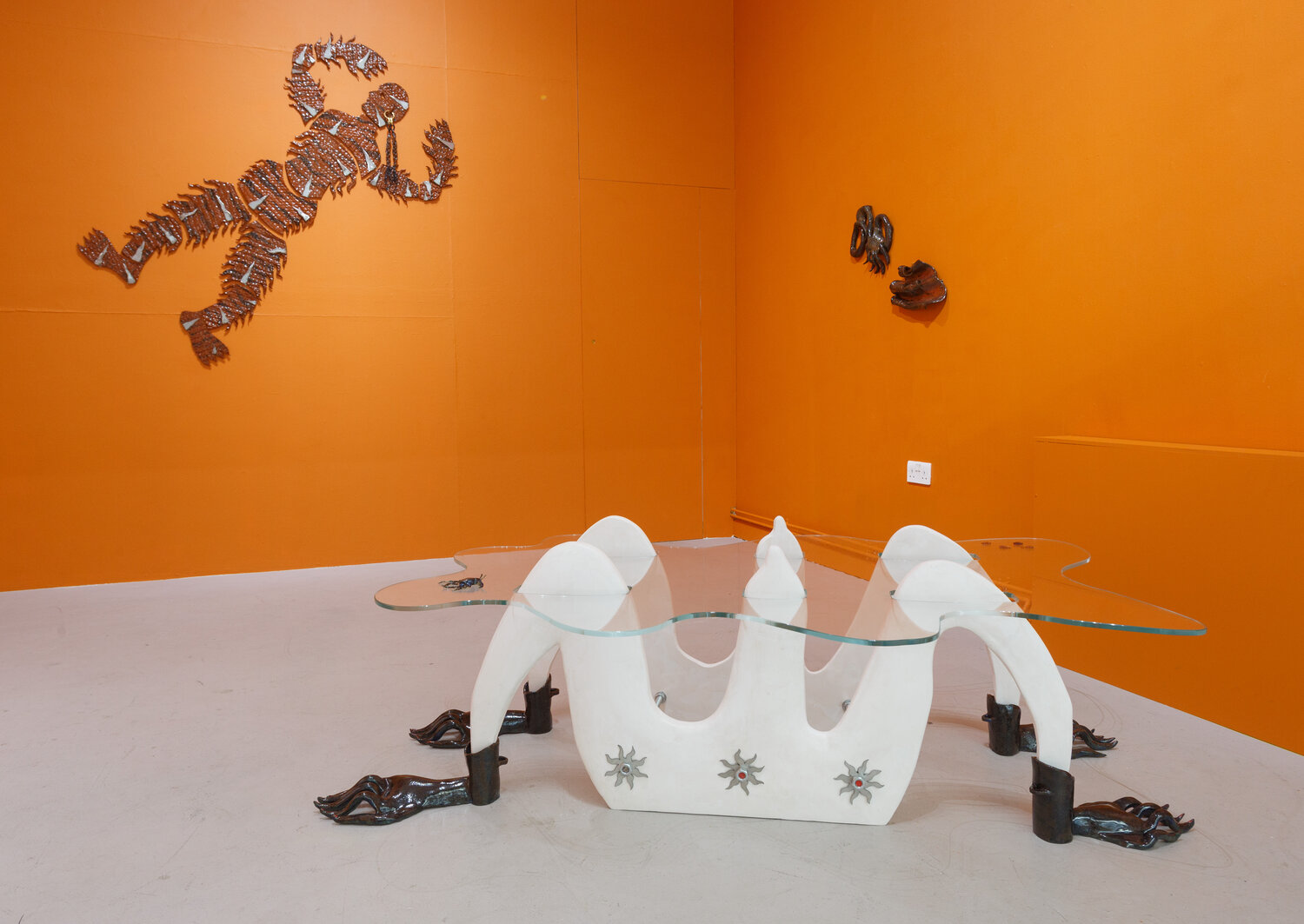


Anousha Payne is a sculptor and painter investigating the relationship between domestic objects and spaces in relation to the idea of animism – the attribution of a living soul to plants, inanimate objects and natural phenomena. In Payne’s work, objects are imbued with a spiritual potential. She explores whether an object can impact the outcome of future events, like karma but with objects rather than actions. Her practice oscillates between intuitive making and painting and a more controlled and planned sculptural practice. She often works with ceramics and for her latest show at indigo+madder she has recently begun incorporating found materials into the pieces.
In this most recent exhibition, Payne built up a series of characters with a narrative based on Tamil folkloric stories, personal experiences and fictionalised accounts. During the lockdown, she began to think more about domestic spaces and how the objects we surround ourselves with impact our feelings and mood. The exhibition space was intended to be warm and inviting rather than hostile, hence the bright orange colour of the walls.
The work the crocodiles wife (your heart tastes like apples) is based upon a Tamil folkloric story called The Monkey and The Crocodile. This tale is about a friendship between a crocodile and a monkey, who climbs a tree each day collecting apples and shares them with the crocodile. One day the crocodile’s wife asks where he is going and decides she would like to eat the monkey’s heart (as it would taste sweet like the nectar of the apples). She uses her cunning to manipulate the crocodile into helping her but in the end, the crocodile decides to save his friend who climbs a tree to safety. The work is a table representing the crocodile’s wife lying in wait for her prey, her knees and breasts emerging from the water, half-human, half-crocodile in a kind of antithesis to Allen Jones’ table sculptures.
On the table sists a ceramic scarab beetle, which is made in response to a short story Payne wrote about a woman who feels challenged to eat a scarab beetle believing that it will bring her good luck. It addresses the rituals we participate in for entertainment, money and putting your faith in something absurd. It references reality TV and a celebrity obsessed culture. The other objects on the table are casts of Payne’s grandmother’s pendant that are given as offerings to the visitors. Last year Payne’s mother’s house was robbed, and her grandmother’s jewellery was stolen. The offerings are a positive response to the theft asking whether negative events can have positive impacts. The casts are made from copal, a Mexican tree resin that Payne acquired while on residency there and used as part of the day of the dead ceremony. When burnt it releases a strong, sweet incense but when solid it has no smell. Payne wanted them to look as though they had been fossilised and recovered, like modern relics.
Anousha Payne (b.1991, Southampton) lives and works in London. Recent solo exhibitions include Indigo Plus Madder, London 2020; AG Projects, London, 2017; Annin Arts via 5th Base Gallery, London, 2016. Recent group exhibitions include Public Gallery, London, 2020; Fibra, Oaxaca, 2019; Victoria Gallery, Samara, 2018.
Her work can be seen online at Cooke Latham Gallery until 18 September 2020. She will have a solo show with them in 2021.
She has a group show called Our Ashes Make Great Fertiliser at Public Gallery until 7 October 2020 and a group show called Vessells opening at Island Gallery in Brussels opening on 1 September 2020.